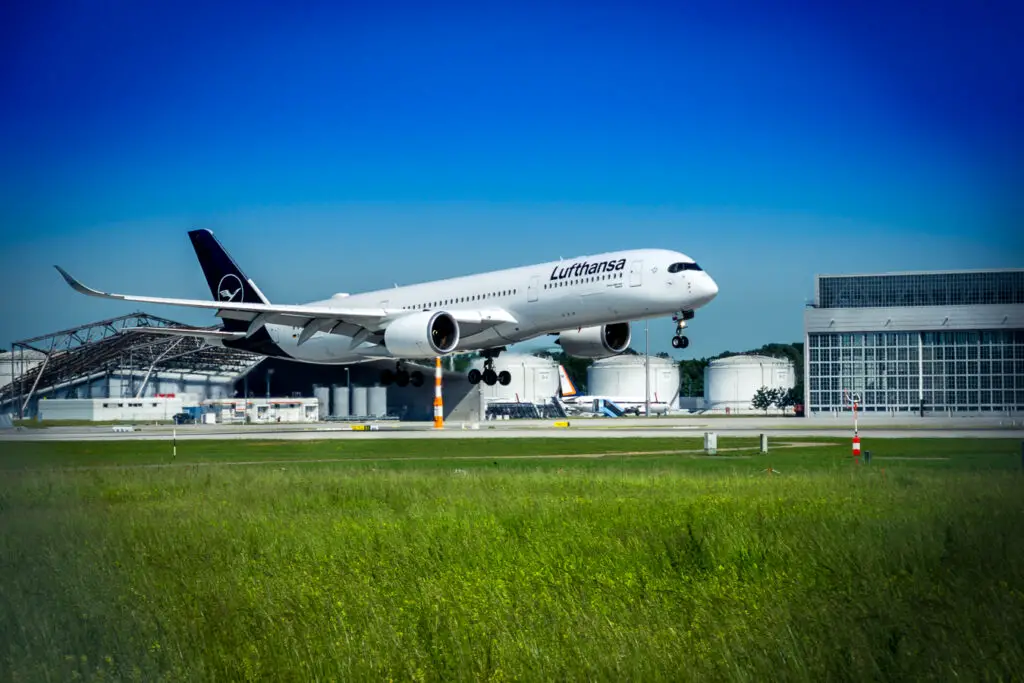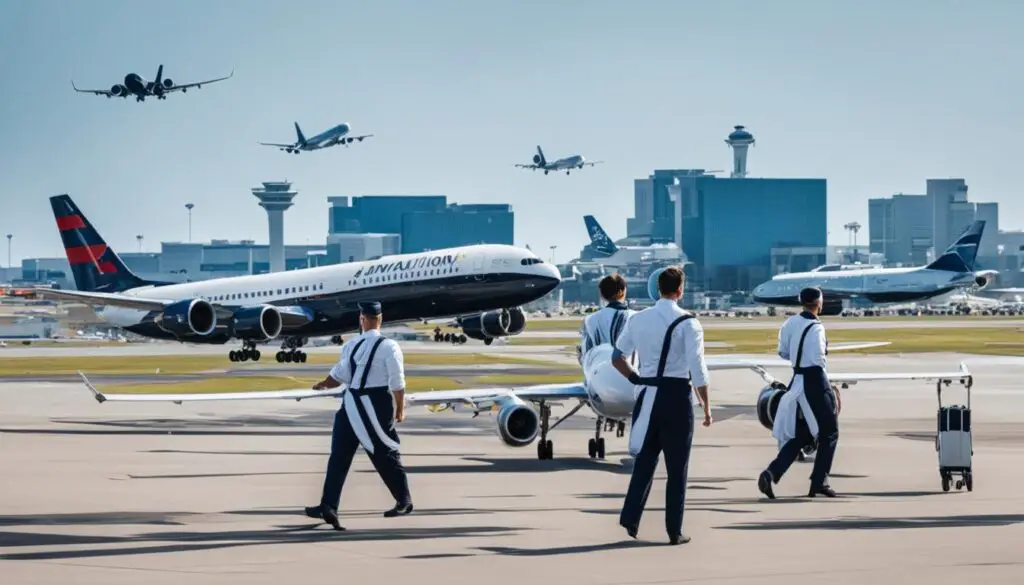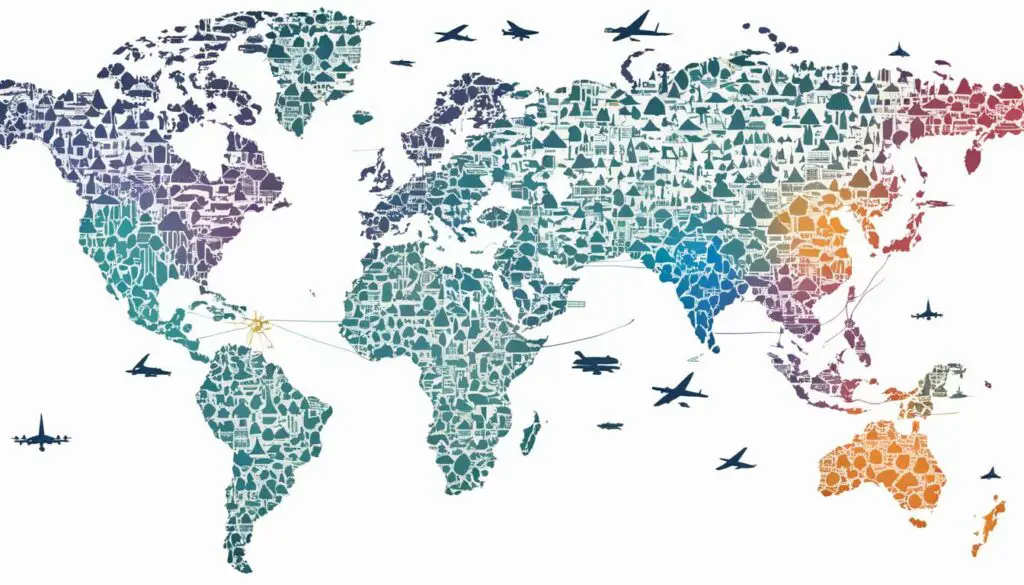
Becoming a pilot is a dream for many aviation enthusiasts, a career path that offers the opportunity to travel the world and experience new cultures while operating modern aircraft. The pilot profession has always been a fascinating field, with its unique duties, challenges, and privileges. From dawn to dusk, pilots take charge of their planes, ensuring the safety and comfort of their passengers.
If you have been considering a career in aviation as a pilot, you are in the right place. This article is dedicated to assisting you in navigating this exciting career path. We will explore the various aspects of the pilot profession, including job profiles, training, entry opportunities, salary prospects, and career growth prospects.
So, let’s dive into the intricacies of the pilot profession and discover how you can turn your aviation dream into a reality.
Job Profile and Tasks
Being a pilot is an exciting and challenging profession that demands a high level of skill and responsibility. Pilots are responsible for navigating aircraft and ensuring the safety and well-being of passengers and crew. The job profile of pilots involves a wide range of tasks and responsibilities that require a combination of technical, operational, and interpersonal skills.
Primary Tasks
Pilots are responsible for a variety of tasks, including:
- Taking off and landing aircraft
- Navigating aircraft using cockpit instruments and visual references
- Maintaining communication with air traffic control and ground crew
- Monitoring weather conditions and adjusting flight plans accordingly
- Ensuring the safety and comfort of passengers and crew during the flight
- Managing emergency situations and making quick decisions in high-pressure environments
In addition to these tasks, pilots must adhere to strict rules and regulations set forth by aviation authorities to ensure safe and efficient operations.
Roles and Responsibilities
Pilots have varying roles and responsibilities depending on the type of aircraft they operate and the airline they work for. Some pilots serve as captains, responsible for overall operations and decision-making, while others serve as copilots or first officers, supporting the captain and handling specific tasks.
Pilots must work closely with other members of the flight crew, including flight attendants, to ensure a smoothly run flight. They must also communicate effectively with ground crew and air traffic control to navigate the airspace safely and efficiently.
The table below outlines some of the typical roles and responsibilities of pilots:
Entry Opportunities for Aspiring Pilots
If you’re an aspiring pilot, there are various entry opportunities you can explore to enter the profession. Here are some of the most popular options:
Flight Schools
Flight schools offer specialized training programs that provide the necessary knowledge and skills to fly aircraft. These programs usually include theoretical instruction, simulator training, and actual flight experience.
| PROS | CONS |
|---|---|
| – Focused, specialized training – Flexibility in terms of program duration and intensity – Potential employment opportunities with the school or other airlines | – Relatively expensive – No guaranteed employment upon completion – May not provide the same level of benefits/training as military or airline programs |
Military Training Programs
The military offers aviation-related training programs for aspiring pilots. Examples include the United States Air Force Undergraduate Pilot Training (UPT) program, and the United States Navy and Marine Corps Aviation Officer Candidate (AOC) program.
| PROS | CONS |
|---|---|
| – Free or subsidized training – Guaranteed employment upon completion – Extensive benefits package – Sense of duty and service | – Long commitment – Competitive and challenging selection process – Strict physical requirements |
Airline Cadet Programs
Many airlines have cadet programs that provide training and development opportunities for aspiring pilots. Cadets are usually hired and trained by the airline, with guaranteed employment upon completion.
| PROS | CONS |
|---|---|
| – Guaranteed employment with the airline – Comprehensive training and development – Often subsidized by the airline | – Highly competitive selection process – More demanding terms and conditions |
Countries with High Demand for Pilots
While the demand for pilots is high globally, certain countries have a particularly strong need for these professionals. According to recent data, the countries with the highest demand for pilots include:
| Country | Estimated Demand |
|---|---|
| China | 60,000 pilots by 2026 |
| India | 17,000 pilots by 2028 |
| United States | 8,000 pilots per year |
| United Arab Emirates | 4,000 pilots by 2030 |
| Philippines | 2,500 pilots by 2024 |
China and India, in particular, have seen significant growth in their aviation industries in recent years, leading to a surge in demand for pilots. The United States also continues to offer ample opportunities for pilots, with strong job growth and development. For those looking to kickstart their pilot career, exploring these countries may be worth considering.

Pilot Profession: Situation in the U.S.
The United States is home to one of the largest aviation industries globally, and the pilot profession is a crucial component of this industry. However, recent developments have impacted the situation of pilots in the country.
One of the significant challenges facing pilots in the U.S. is the shortage of qualified candidates in the job market. According to the 2021 Boeing Pilot & Technician Outlook Report, there is a projected demand for 609,000 new pilots globally over the next two decades, with the North American region accounting for around 22% of this demand.
The pandemic has also played a role in shaping the situation of pilots in the U.S. The aviation industry was hit hard by the pandemic, resulting in furloughs and layoffs. The Air Line Pilots Association (ALPA) estimates that 40,000 pilots lost their jobs in the United States in 2020. Although the industry is slowly rebounding, the effects of the pandemic are still being felt.
Another key factor influencing the situation of pilots in the U.S. is the regulatory framework. The Federal Aviation Administration (FAA) is the primary regulatory body overseeing the aviation industry in the U.S., and it has implemented various safety regulations that impact pilots. The FAA has also developed a certification process that aspiring pilots must undertake to be eligible for flying.
Despite these challenges, the U.S. remains an attractive destination for pilots due to the high earning potential. Salaries for pilots in the country can range from $34,000 to $200,000 per year, depending on factors such as experience level and the type of aircraft flown. Furthermore, pilots in the U.S. have opportunities to advance their careers and take on leadership roles within the aviation industry.

| Challenges | Opportunities |
|---|---|
| Shortage of qualified pilots | High earning potential |
| Pandemic-related layoffs and furloughs | Career growth prospects |
| Stringent FAA regulations | Leadership roles in the industry |
Pilot Profession: Situation in Europe
Europe offers a unique perspective for the pilot profession, with varying regulations and a diverse aviation sector. The job market and career prospects in Europe reflect this dynamic environment.
Airlines in Europe have been expanding their fleets. As per recent reports, airlines in the continent will require more than 200,000 pilots in the next two decades, given the increase in traffic and aircraft delivered. The European Union Aviation Safety Agency (EASA) regulates the aviation industry in the region, providing certification and regulation of training. However, different countries might implement additional rules, such as language proficiency requirements and specific local certifications.
| Country | Number of Pilots |
|---|---|
| United Kingdom | Over 27,300 |
| Germany | Over 25,000 |
| Italy | Over 15,000 |
| France | Over 13,000 |
| Spain | Over 10,000 |
The table above provides an estimate of the number of pilots in some of the countries in Europe. These numbers demonstrate that Europe has a significant demand for pilots, especially in the United Kingdom and Germany.
Additionally, pilots in Europe generally earn a good salary and have opportunities for career growth in various sectors, such as airlines, cargo, and corporate aviation. Some airlines offer cadet programs and specific training to incorporate new pilots, mainly focusing on student pilots, providing a more extensive range of options to the aspiring pilots. The opportunities to work in diverse environments and meet other European countries make this region an attractive place to work.
Pilot Profession: Situation in Other Regions
In addition to the United States and Europe, pilots are in demand in various other regions of the world. Each region presents unique circumstances and requirements for pilots, including different aviation regulations and market dynamics. Here are some of the regions where the pilot profession is thriving:
| Region | Key Insights |
|---|---|
| Asia | Asia has experienced a surge in air travel in recent years, resulting in a high demand for pilots. The aviation market in Asia is expected to continue growing, opening up new career opportunities for pilots. |
| Middle East | The Middle East is home to several major airlines and aviation companies, creating a thriving job market for pilots. Additionally, many Middle Eastern airlines offer attractive salaries and benefits packages for pilots. |
| Africa | The aviation industry in Africa is rapidly developing, with several countries investing in infrastructure and expanding their aviation markets. As a result, there is a growing demand for pilots in the region. |
| Australia and New Zealand | Australia and New Zealand have well-established aviation industries, with several major airlines and training schools located in the region. The demand for pilots is expected to remain strong, particularly as travel restrictions ease. |
No matter the region, the pilot profession offers exciting opportunities for those with the necessary skills and qualifications. With the aviation industry continuing to grow globally, aspiring pilots should explore the different paths available to enter the profession and consider the unique dynamics of each region.

Training, Studies, and Application
Becoming a pilot is a highly specialized profession that requires rigorous training to ensure flight safety. Generally, there are two primary paths through which one can acquire the necessary training to become a pilot: civilian (private) and military.
The civilian pilot training path involves obtaining a private pilot license through an FAA-approved flight school. This license is a basic requirement for becoming a commercial pilot and entails completing specific training hours, including flight simulation training.
The military pilot training path entails joining the military and undergoing intensive training to become a pilot. This process involves completing rigorous physical and mental training, as well as specialized pilot training.
Additionally, aspiring pilots may opt for academic studies that provide specific knowledge and skills relevant to the aviation industry. Some of the common aviation-related programs of study include aviation science, aviation management, and aeronautical engineering.
Once the training is complete, aspiring pilots can then apply for relevant jobs in the aviation industry. This involves submitting their certifications and licenses, completing physical exams, and undergoing interviews and psychometric tests.
Salary, Development Opportunities, and Promotion Prospects
As with many professions, salary ranges for pilots can vary depending on their experience, qualifications, and the location they work in. According to the Bureau of Labor Statistics, the median annual wage for airline and commercial pilots in the United States is $147,220 as of May 2020. Pilots in the top 10 percent earned more than $208,000, while those in the bottom 10 percent earned less than $44,660.
Development opportunities for pilots are abundant, with numerous options to further their education and training. Pilots can pursue additional licenses, certificates, or endorsements to expand their skillset and become more employable. Additionally, pilots can seek opportunities to advance their careers within their organization or by transitioning to another company that offers more opportunities for growth.
Promotion prospects for pilots can vary depending on the employer and industry. Commercial airline pilots, for example, can move up the ranks from first officer to captain with experience and a proven track record. Similarly, pilots can transition to management roles within aviation companies or join regulatory bodies to further their careers.
Questions and Answers
What is the job profile of a pilot?
Pilots are responsible for operating aircraft and ensuring the safe transportation of passengers and cargo. They perform tasks such as pre-flight inspections, monitoring instruments, communicating with air traffic control, and navigating the aircraft.
What are the primary tasks of a pilot?
The primary tasks of a pilot include conducting pre-flight checks, controlling the aircraft during takeoff and landing, monitoring instruments and systems, communicating with air traffic control, following flight plans, and troubleshooting any safety or mechanical issues that may arise.
What are the entry opportunities for aspiring pilots?
Aspiring pilots have several entry paths, including enrolling in flight schools, joining military training programs, or participating in cadet programs offered by airline companies. These opportunities provide the necessary training and qualifications for a career in aviation.
Which countries have a high demand for pilots?
Countries such as the United States, China, the United Kingdom, the United Arab Emirates, and Singapore have a high demand for pilots due to their robust aviation industries. These countries offer significant job opportunities and career growth prospects for pilots.
What is the current situation of the pilot profession in the United States?
The pilot profession in the United States is highly regulated and provides ample job opportunities for skilled pilots. However, there is a growing need for more pilots due to increased retirements and the expansion of the aviation industry.
How is the pilot profession in Europe?
Europe has a diverse aviation sector with different regulatory bodies governing each country. The pilot profession in Europe offers various opportunities, depending on factors such as language proficiency, experience, and the specific aviation market in each country.
What is the situation of the pilot profession in other regions?
Apart from the United States and Europe, regions such as the Middle East, Asia-Pacific, and Latin America also have unique dynamics in the pilot profession. These regions offer diverse aviation sectors and career prospects for pilots.
What training and studies are required to become a pilot?
Becoming a pilot requires obtaining a private pilot license, followed by advanced training and certification. Many aspiring pilots pursue aviation-related studies at recognized training institutions or universities to gain the necessary theoretical knowledge and hands-on experience.
How can I apply to become a pilot?
The application process for aspiring pilots typically involves meeting the prerequisites, including age requirements and medical certifications. Afterward, candidates can apply to flight schools, military programs, or airline cadet programs to kick-start their pilot training and career.
What is the salary range for pilots, and what are the development opportunities and promotion prospects?
Pilot salaries can vary depending on factors such as experience, airline type, and geographical location. However, pilots generally enjoy competitive salaries and benefits. As pilots gain experience and seniority, they have opportunities for career development, such as becoming flight instructors, captains, or transitioning to managerial roles within the aviation industry.

